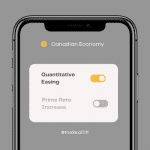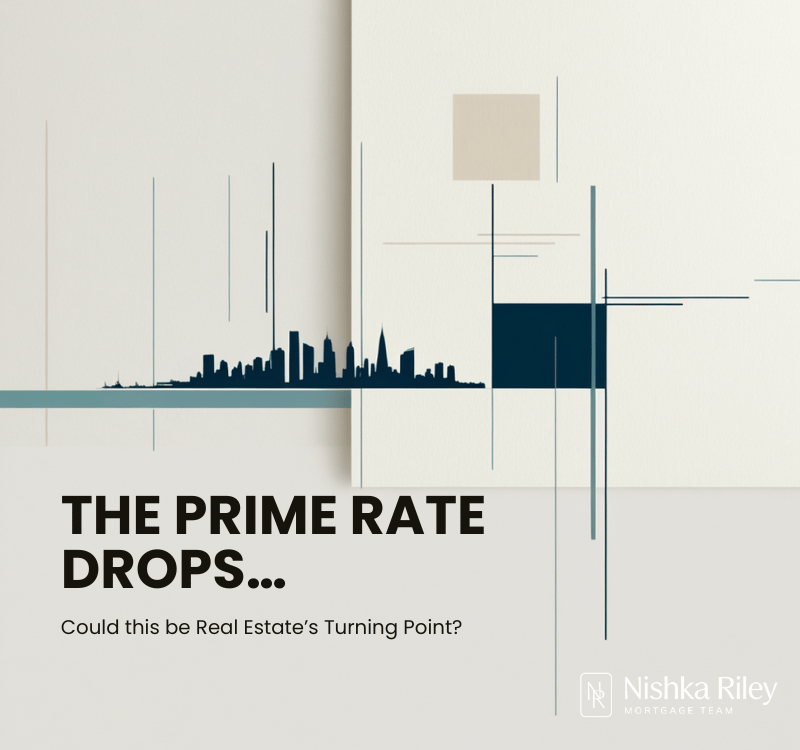
Mortgage Rate Update – Tiff Hits The Pause Button
March 8, 2023
Mortgage Rate Update – Down For The Count?
June 7, 2023The Bank of Canada (BOC ) held the prime rate steady today. As if inspired by spring, Governor Tiff proved himself a true economist by giving a press release filled with comments of sunshine and rain.
Though Tiff kept the prime rate the same, he promised to continue to squeeze the economy via quantitative tightening. His reason being that inflation is not quite back in the box it came from, but there are enough signs that it won’t be long now before things are under control.
So where are the rate cuts Nishka?! They’re coming, I promise!
Actually, they are already happening, just not in the way you would expect.
What do I mean? The big six banks have lowered some of their rates over the past week. Still, they are reluctant to advertise them via their usual flashy/splashy spring marketing campaigns. The reason is why is two fold. The first is because of Tiff’s quantitative tightening is keeping the cost of funds higher than usual on mortgage terms in the 1 – 3 year range. The second reason is that the banks are looking for more data to confirm that we are on the right side of inflation.
So what exactly are the big six banks doing? They’re pricing each customer’s deal individually, but there’s a catch, you have to request it. And that’s where we come in. Given our relationship with several lenders we are getting each deal priced by the various bank’s treasury departments and seeing 50bps to 70bps discount from the posted rates, depending on the term and mortgage size.
The non-bank lenders however, are a different story. They don’t play games; they cut to the chase by offering rates roughly 100bps lower than the banks on their 5 year terms. On top of that, they have cut their rates by 60bps this week.
So when are rates going to go back to normal? We are just on the cusp of it happening. Here is what to keep an eye out for.
Cost of Funds Needs To Ease
If you look at the chart below, you can see how the 5 year Government of Canada bond is starting to approach the April 2022 level. This is when the fight against inflation started. Once we reach the 2.6% level and stay there for a few weeks, the banks will open up the purse strings. BTW I start each morning looking at this chart, with a cup of coffee in hand. In my experience, it takes about 2 weeks before a drop on this chart shows up in lower rates.

The Supply Chain Bottlenecks Need to Go
I’ve often said that we don’t have a demand issue; it’s a supply issue. Now that Switzerland has put COVID behind them and the USA has declared an end to the pandemic emergency, we’ll start to see greater efficiencies in manufacturing which will translate into lower production costs, hopefully leading to lower prices.
The Labour Market Needs To Soften
The tight labour market was also mentioned in today’s BOC press release, particularly in the service market. However, with the flood of new immigrants coming into the country, hopefully, that will provide enough competition within the labour market to put a lid on wage increases.
But there is a cost to everything…
If we see inflation fall, especially due to the last two points, it will create a boost in confidence, which I guarantee you will translate into higher housing prices…and the early signs that starting top happen are visible.
But sales are at an all time low Nishka?!
Yes they are, but prices on the North Shore and Vancouver are holding steady, especially in the more desirable areas. Even in the Okanagan, we are seeing clients go into multiple offers in the $1.7 to $2 million price range.
The issue is the limited housing supply. A lot of homeowners just don’t want to move so they aren’t listing. Meanwhile, the Millennials are coming into the market, and in Canada they are a larger demographic than the Boomers where. They also have parents, who mainly acquired their wealth through real estate, helping them with a large portion of the downpayment. Also adding to the price pressure is that in a couple of years, all those new Canadians who immigrated from other parts of the world, and helped Canada stave off our labour crisis, will want to buy a home. These two powerful forces will provide a solid base for the next 5 years for real estate prices. So don’t expect any market correction/buying opportunities any time soon.
The bottom Line:
Combing the BOC press release with views from various economists, we will see fixed mortgage rates start a deeper decline by mid June. However, with inflation still in the air, don’t expect to see a sub 4% rate until later this year. Some economist are calling for a decrease in the prime rate by December, while some are calling for the first decrease by September. At this time, its tough to get a true sense of where things are going, but the good news is that it won’t be long before the picture gets clearer.
For now, we are continuing to recommend shorter term mortgages. Given the cost of funds for the 1 and 2 year terms ( due to the quantitative easing ) the 3 year term seems to be the sweet spot in providing best pricing and the ability to capture lower rates in the future.
I’ve said it before, and I’ll say it again. At this point of the interest rate cycle, strategy is everything.
Strategy comes from experience, and I’m happy to share what I personally learned from the 2007 and 2018 rate cycles.

The next Bank of Canada meeting is June 7th, 2023
Did you Like this post? Then you’ll Like my Facebook Page. It’s filled with current news on what’s going on in the world of real estate.




